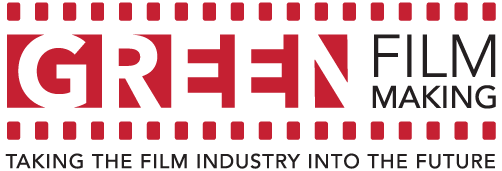Last November 23rd another successful edition of the Green Film Making Doc Talks at IDFA took place in the Brakke Grond in Amsterdam. Like every year, Green Film Making was approached by the festival to organise in-depth discussions with a number of films that explore sustainability in all its aspects. It was a beautiful evening with marvellous guests and for both films, Eating Animals and Let There Be Light, a sold-out screening.
Eating Animals, the first film that Green Film Making showed, was clearly very hard to stomach for the audience.
The documentary, based on the book by Jonathan Safran Foer, shows a truckload of convincing arguments to reduce meat consumption and to limit the bio-industry. An impressive line-up of experts highlights the complex problems, richly illustrated with historical fragments and, inevitably but necessarily, sometimes shocking images. This stirred up a lot. Some of the audience walked out, because the images were so violent.
The people that staid could participate in the discussion after the film with director Eddy Terstall and film caterer Esther Akkerhuis (Spek and Bonen). Esther also really struggled with the images shown, but this only made her more determined. A vegetarian day on set, which she frequently uses, is now also being introduced on small catering jobs. Why not. If you cook well, nobody complains that there is no meat. And if you do buy meat, get the good stuff at the local artisanal butchers and eat less of it. In any case, Esther does not throw anything away and always processes leftovers in sauces, soups and wraps. Eddy, himself a vegetarian, once refused to allow a large meat company as sponsor in the financing of his film Alberta, and for that reason accepted a lower budget. He now realises that as a director he also has a big influence on his crew and their choices for catering. He will definitely be using this in upcoming projects.
The second film of the evening, Let There Be Light, we chose for it’s in depth treatment of alternative energy sources, specifically nuclear fusion. Before the screening Ambassador Nӧlke of Canada gave an introduction speech. She talked about how the Canadian government supported the film and as well explained about Canada’s policy on sustainability and climate change. For example, Canada will levy a tax on carbon emissions from next year. She also thanked Green Film Making and IDFA for showing this important film.
And the discussion after the film flowed easily. There were many questions for both our guests, especially about the applicability of nuclear fusion. Canadian co-director and DOP Van Royko ofcourse had a lot to say about the filmmaking process. Professor Marco de Baar, who as a lead scientist at DIFFER also participates in the international fusion project portrayed in the film (ITER), explained clearly why, in addition to the renewables such as solar and wind energy, we will also need this alternative (nuclear fusion) in the future.
Marco: I’m a very big fan of renewables. Let that be clear. But if you look at energy consumption, you have three very distinct segments. First is what they call the built environment, houses, personal use of electricity, heating. For that, the renewables are probably going to be quite ok. Then you have long distance transport. For this you need very concentrated energy carriers. Here the renewables are problematic. And then finally you have very big industry where you need not only the energy, but you also need very high temperature heat. There the renewables are never going to make it. So, I am not poopoo-ing renewables, I’m just saying we shouldn’t look at it as a silver bullet.

Van Royko spoke very passionately about science. And, above all, the importance of people like Marco who dedicate their lives to research of which a direct result is sometimes far in the future: These scientists are really the heroes of our civilisation. Everything that we have achieved as a people on this planet is because of people like these scientists that put their head down and spend the long hours. And often in their lifetime they just do this little tiny granular thing, but all together it gives us the kind of quality life that we have these days. And I think we have to put them on a higher pedestal and we have to show them to our children on an equal footing as football players or the Kardashians or whatever..
Couldn’t attend, but would still like to listen to the whole Q & A? You can do that here:
Fantastic that every year the Green Screen Day at IDFA can bridge the gap between filmmakers who show the urgency of sustainability in their films and our mission as content makers, to make our profession and the way we produce more sustainable.
Missed Let There Be Light? Keep on eye on this site for upcoming screenings: http://fusion.film/LTBL/festivals-screenings/


You must be logged in to post a comment.